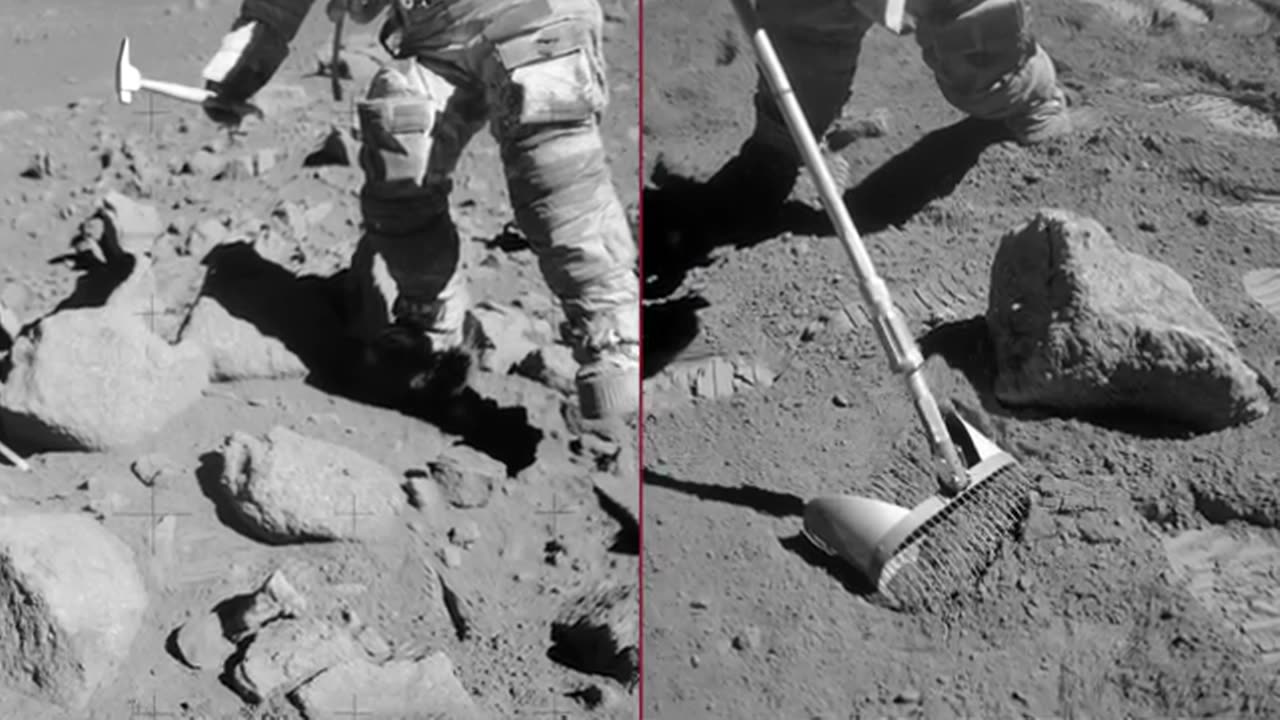Premium Only Content

"Lunar Insight: Unveiling the Secrets of the Moon's Mysteries"
In the vast cosmic expanse, Earth's moon stands as a celestial enigma, shrouded in mystery and intrigue. As humanity ventures beyond the confines of our home planet, the Moon becomes the stage for an extraordinary scientific odyssey, a journey that transcends borders and beckons us to unravel its cosmic secrets.
Enter the realm of "Moon Quest," where scientific curiosity meets lunar exploration, spearheaded by dedicated minds and cutting-edge technology. This monumental endeavor is not just a mission; it's a testament to the relentless pursuit of knowledge that defines our species. The science operation on the Moon represents a pivotal chapter in humanity's cosmic narrative. It unfolds against the stark lunar landscape, a canvas that has witnessed eons of celestial ballets and cosmic dramas. As we embark on this lunar odyssey, the primary objective is to decode the Moon's enigmatic past, understand its present dynamics, and lay the groundwork for future interstellar exploration. At the heart of Moon Quest lies a sophisticated array of scientific instruments, each meticulously crafted to unveil the Moon's mysteries. Advanced telescopes gaze into the cosmic abyss, capturing the minutiae of lunar geology and offering unprecedented insights into the Moon's formation. Cutting-edge spectrometers analyze the composition of lunar soil, seeking clues about the Moon's history and its role in shaping the early solar system. The lunar surface, once thought to be a desolate expanse, is now a bustling scientific hub. Robotic explorers, equipped with state-of-the-art sensors, traverse the Moon's terrain, mapping its topography and probing its subsurface. These intrepid machines venture into craters and traverse ridges, collecting samples that promise to unlock the geological secrets embedded in the Moon's rocky exterior. One of the key focuses of MoonQuest is unraveling the Moon's mysterious polar regions. These frigid landscapes, perpetually cast in shadows, harbor secrets that could reshape our understanding of the lunar environment. Instruments aboard lunar rovers probe the permanently shadowed craters, where water ice may be preserved—a potential resource for future human exploration and a key ingredient in deciphering the Moon's climatic history. #SpaceLunarWonder
-
 LIVE
LIVE
MissesMaam
5 hours agoMY FAVORITE ARTIST IS FINALLY IN FORTNITE 💚✨
137 watching -
 2:02:34
2:02:34
The Quartering
3 hours agoTrump Tariffs Immediately Work, Thanksgiving Cost Insanity, Hollywood Actor In Psych Ward From Trump
56.5K16 -
 36:54
36:54
Stephen Gardner
2 hours ago🔥I can't believe what Happened To Trump's insider pick!
5.48K9 -
 27:59
27:59
LumpyPotatoX2
18 hours agoRumble Gaming Talk W/Chris Pavlovski & SilverFox - #RumbleGaming
29.7K6 -
 1:50:13
1:50:13
vivafrei
4 hours agoInterview with Rumble CEO Chris Pavlovski - Rumble & Bitcoin? Shocking Stats From Florida & MORE!
76.7K12 -
 59:02
59:02
Russell Brand
4 hours agoIs Free Speech Under Threat? Australia’s U16 Social Media Ban, & Maddow vs Jay Bhattacharya – SF501
116K245 -
 LIVE
LIVE
TheMonicaCrowleyPodcast
1 hour agoThe Monica Crowley Podcast: Tears of Clowns
286 watching -
 1:07:34
1:07:34
The New American
2 hours agoIncoming Border Czar Tom Homan Threatens Dem Leaders With Loss of Federal Money | New American Daily
16.2K3 -
 LIVE
LIVE
GameLeap RAID Shadow Legends
2 hours ago $2.23 earnedSOULSTONE PULLS, Building He-Man, F2P Account Update! - Raid Shadow Legends
167 watching -
 1:57:44
1:57:44
The Charlie Kirk Show
3 hours agoTrump's Tariff Brilliance + Crushing Lawfare Forever | Sen. Moreno, Habba, O'Keefe | 11.26.24
133K47